
Search Wild Foods Home Garden & Nature's Restaurant Websites:
Violet, Common Blue
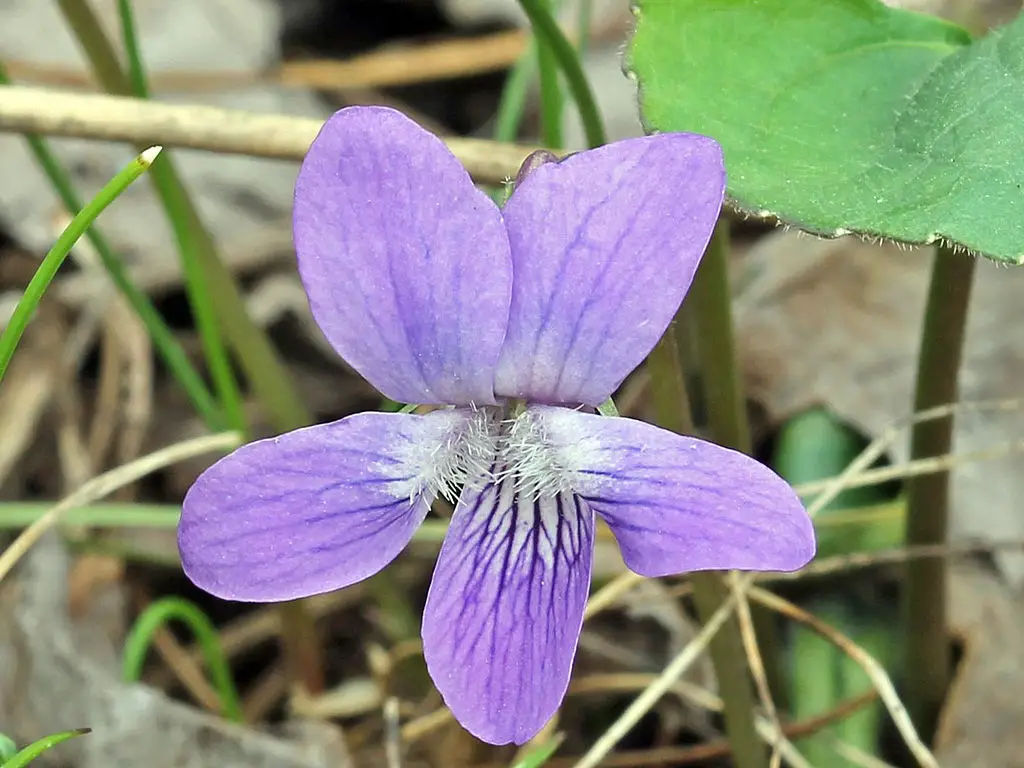
(By: Rob Routledge CC BY-SA 3.0)
(NOTE: If you are not interested in growing Violets, but just finding the plant and using it, try going to the Nature's Restaurant Online site for the Common Blue Violet.)
Common Blue Violet (Viola sororia). This plant often forms colonies of plants that come from the rhizomes. This is a plant not many would think of as edible for some reason.
Is the growing of this plant compatible with Natural farming, Ecoagriculture or Eco friendly agriculture, Ecological farming, Sustainable agriculture, Agroforestry or Agro-sylviculture and Permaculture: This perennial works well in a Natural farming, no-till garden. Once planted, there is no need to till the soil.
Seeds: It self-seeds, so if you are able to gather seeds, there is no problem starting it from seed. Seeds are available on line, and very commonly in stores that sell seeds in the spring. Just make sure you write down the Latin name (Viola sororia) and get that one. Not all varieties of Violet are edible.
Transplanting: If you know where some are you can transplant, dig a bucket full, and put the whole section in the ground. They should take quit readily. By the way, you might be able to find this plant at nurseries - it is grown as a common garden plant.
Soil & Site: This plant likes partial sun to a light shade spot. It can grow in soils that range from slightly acidic to slightly alkaline. The most important requirement is the soil moisture: it likes the soil to be moist all the time, but well drained. It will grow in clays to sandy loam.
Maintenance: Nothing really. You could put some composted manure on where it grows in the fall in very small amounts. If you have a bad drought, you should water.
Harvesting: This green is best only harvested in the earlier part of spring. Because it comes up early, it is nice to have before other plants are ready to harvest. Just pick the younger leaves and flowers. You have to hold the rest of the plant while picking, or you could tear it up by the roots.
Using: When cooked, the leaves taste more or less like spinach, and so, they can be used like you would use spinach. The spring leaves and flowers are safe and fine in salads raw. Make them as one leaf ingredient among others. The flowers look great too, and combine well with Dandelion flowers for color.
Description:
- USDA Plant Hardiness Zone: 3-9 (More information on hardiness zones).
- Soil pH: 5.6-7.5
- Plant Size: Leaves up to 10 cm (4 inches) tall and 15 cm (6 inches) wide
- Duration: Perennial
- Leaf Shape: Ovate to Orbicular-Cordate, meaning oval to round with Cordate shape at the base where the stem comes out. Cordate means the stem of the leaf comes from an indentation at the base of the leaf and the two bottom sides of the leaf extend below the stem.
- Leaf Phyllotaxis (Arrangement) on branch: (rosette) of basal leaves (leaves at the base)
- Leaf Size: up to 7.5 cm (3 inches) long by 7.5 cm (3 inches) wide
- Leaf Margin: Scalloped margin (crenate) to sawtooth (serrate)
- Leaf Notes: Can be dark green to a lighter yellow tinted green
- Flowers: about 2 cm (3/4 inch) diameter, with five rounded tipped petals. Mauve, purple to blue. The center of the flower is whitish. Bloom from mid to later spring. Flowers are scentless
- Habitat: This plant often forms colonies of plants that come from the rhizomes. Likes partly shaded areas with moist but not wet soils. Open woods, lawns, edges of woods, gardens as a "weed" or planted.
Web Resources:
- Recipe search on the web here (Google search) and here (Bing search).
- Pictures on the web here (Google images) and here (Bing images).
- Interactive USDA distribution map and plant profile here.
- The Biota of North America Program (BONAP) distribution map here. BONAP map color key here.

Common Blue Violet (Viola sororia) range. Distribution map courtesy of U. S. Department of Agriculture (USDA Natural Resources Service) and used in accordance with their policies.
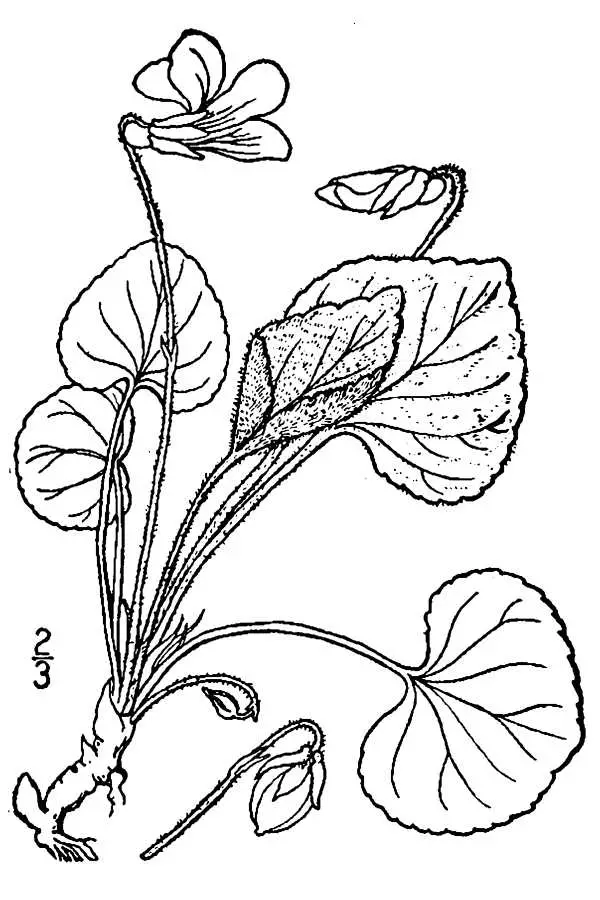
Drawing. (USDA-NRCS PLANTS Database / Britton, N.L., and A. Brown. 1913. An illustrated flora of the northern United States, Canada and the British Possessions. 3 vols. Charles Scribner's Sons, New York. Vol. 2: 549)
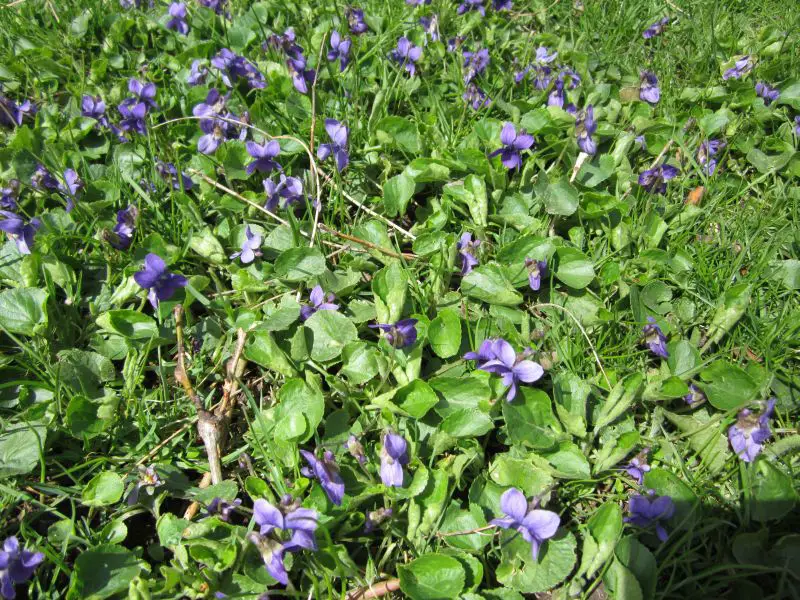
A group of Common Blue Violets coming up in a lawn in early spring.
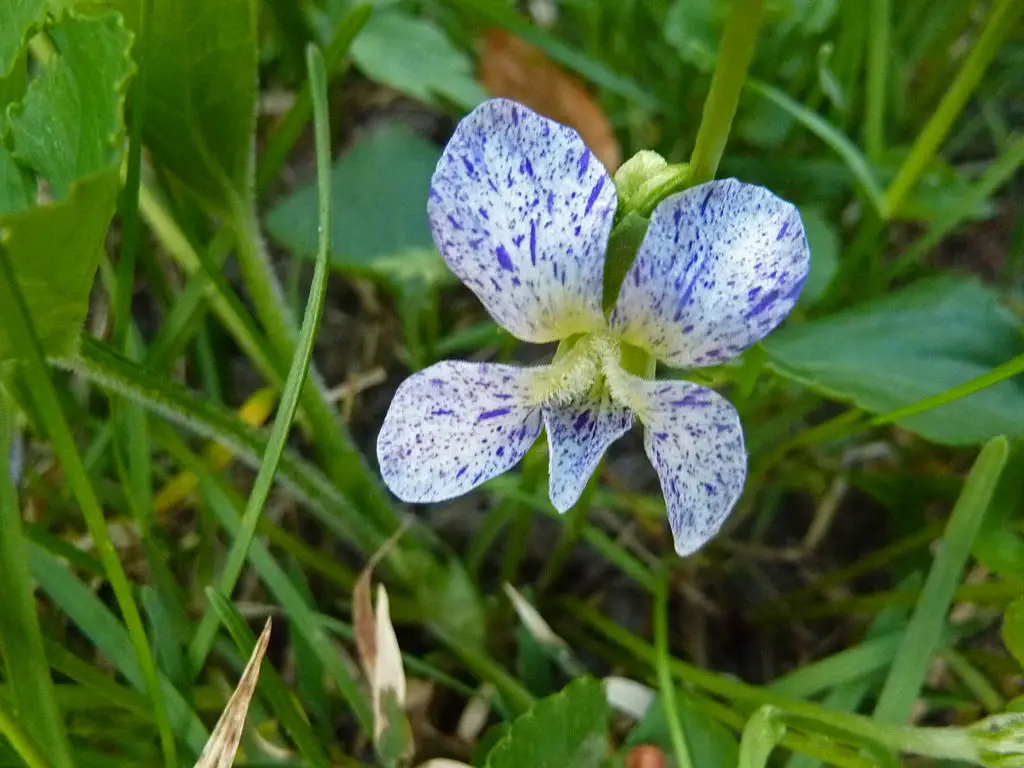
Not always violet in color. Can be blue or like this one called Freckles. (James Steakley CC BY-SA 3.0)
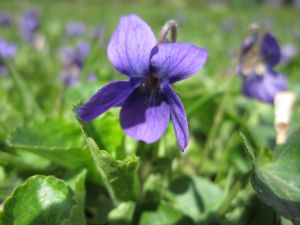
Search Wild Foods Home Garden & Nature's Restaurant Websites:
Share:
Why does this site have ads?
Originally the content in this site was a book that was sold through Amazon worldwide. However, I wanted the information to available to everyone free of charge, so I made this website. The ads on the site help cover the cost of maintaining the site and keeping it available.
Google + profile
